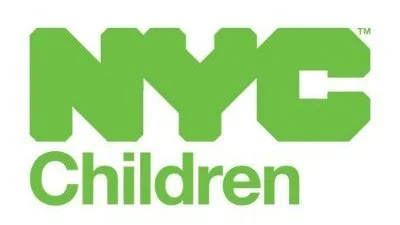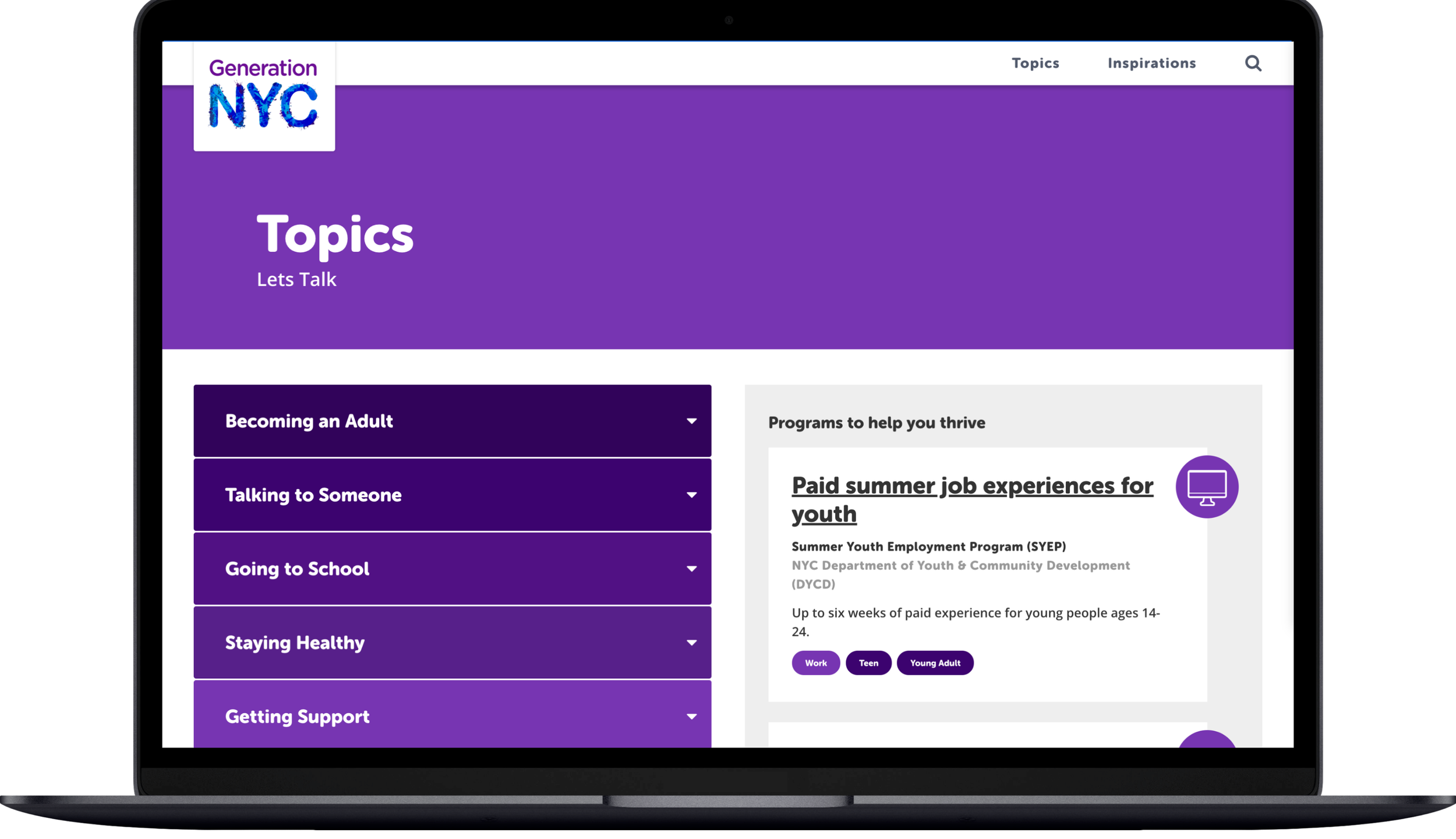Generation NYC
As part of the team at Mayor’s Office for Economic Opportunity, I helped improve the usability and relevance of Generation NYC.
Specifically, I designed and managed a robust discovery workshop. Collaborators included product managers, service designers, and the Youth Leadership Council of Administration for Children's Services (ASC).
Project Type: UX Research
Role: Service Design Fellow
Organization: Mayor’s Office of Economic Opportunity with ASC
Timeline: 1 month (2018)
Team Size: 8 members, 15+ collaborators
Background
Generation NYC provides a wealth of information on housing, finances, education, and other helpful topics for growing up in NYC.
“A first-of-its-kind digital platform for New Yorkers ages 13-24. This groundbreaking “mobile first” website – accessible by phone, tablet, or computer – was designed to help young New Yorkers of all backgrounds and identities navigate the sometimes challenging waters of adolescence and young adulthood by offering tailored resources and opportunities.” (Press release)
Although market research indicated high value, product data and user feedback suggested a need to improve the usability and relevance of the site.
The product team needed to evaluate the site’s navigation, page layout, as well as explore new content and features relevant to young New Yorkers.
Deliverable & Impact
A new user research protocol
I designed a workshop to assess the current state of the site and to envision a new one. This involved:
Evaluative research: Usability test of the current site, assessing time-on-task, successful task completion, and qualitative insights (e.g. likes, dislikes, and recommendations on how to improve the user experience).
Brainstorming: Card sort, highlighting what topics they most cared about (e.g. school, work, budgeting, counseling, health insurance, and LGBTQIA+ resources), and a brainstorm of relevant topics, noting ideas on printouts of the webpages.
My workshop design shaped the team’s user research protocol, incorporating small group work for collaboration and creative problem solving.
Product recommendations
I summarized findings from each activity and highlighted ways to improve user engagement. Ideas included:
Highlighting the texting feature as it was helpful for staying informed, but was overlooked at the bottom.
Clarifying the headlines since users tended to browse quickly and click on more descriptive headlines.
Creating resources for life skills and mental health as users felt like those were not available in school.
My insights and recommendations helped inform the roadmap for both the product and content teams.
Challenge
Managing team synthesis
Since multiple researchers facilitated small group sessions, one challenge was sharing insights across the team. To address this, I developed a protocol for sharing key takeaways and observations.
As part of the research plan, I created an analysis template in a spreadsheet to identify common problems and opportunities for further exploration with the team.
Specifically, I applied the "What, So What, Now What" framework to understand user needs, explore the implications, and determine next steps. In addition to my discovery workshop model, the product team adopted my synthesis protocol as a model for deeper understanding and actionable planning.






